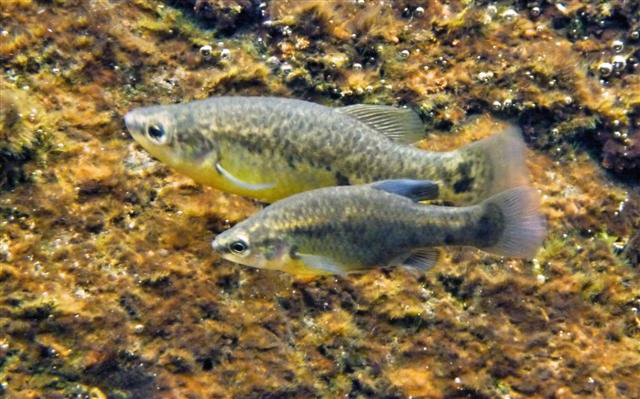| Goodeidae (Splitfins), subfamily: Goodeinae |
| 4.1 cm SL (male/unsexed); 4.143 cm SL (female) |
|
benthopelagic; freshwater; depth range 2 - 4 m |
| North America: Mexico. |
|
Dorsal soft rays (total): 13-14; Anal soft rays: 13-14. This species differs from its sister species Zoogoneticus quitzeoensis in having a shorter preorbital distance (Prol/SL mean = 0.056, SD =0.01); a longer dorsal fin base length (DFL/SL mean = 0.18, SD = 0.03); 13-14 dorsal fin rays (Ref. 83562). |
| The type locality is a permanent spring of lentic and clear waters and forms a small pond of approximately 1500 sq.m; the bottom rocky in its periphery and muddy in most of the pond. Aquatic vegetation composed of Iris sp. and Ceratophyllum sp, emergent vegetation Typha sp. and Scirpus sp., and the introduced species Eichhornia sp; the terrestrial vegetation is of the subtropical forest type. Associated fish fauna are the native species, Alloophorus robustus, Chapalichthys encaustus, Goodea atripinnis, Skiffia multipunctata (Goodeidae); Poeciliopsis infans (Poeciliidae); Lampetra geminis (Petromyzontidae); and introduced species Poecilia mexicana, Xiphophorus hellerii (Poeciliidae), Oreochromis spp. (Cichlidae), Cyprinus carpio, and Ctenopharingodon idella (Cyprinidae) (Ref. 83562). |
|
Vulnerable (VU); Date assessed: 12 September 2018 (B1ab(i,ii,iii,iv)+2ab(i,ii,iii,iv)) Ref. (130435)
|
| harmless |
Source and more info: www.fishbase.org. For personal, classroom, and other internal use only. Not for publication.
